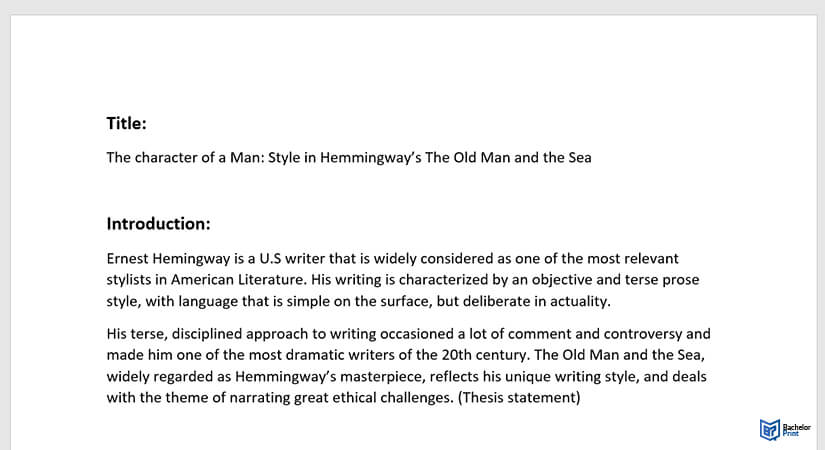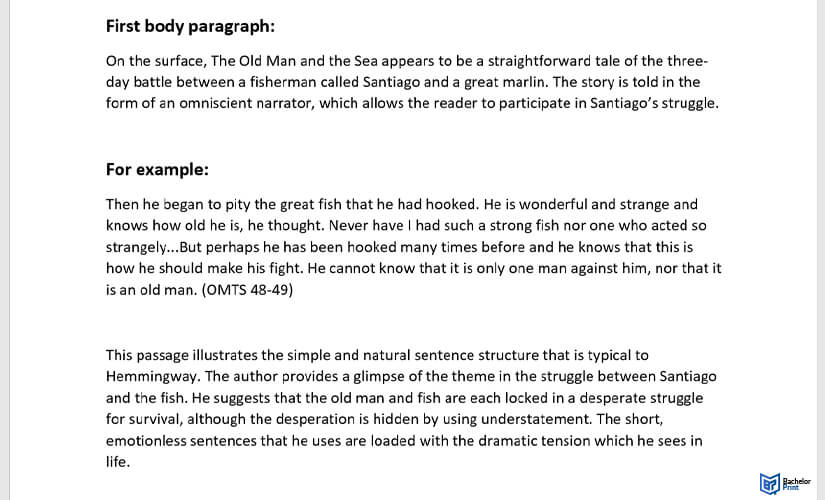
Literary analysis involves the process of closely examining, interpreting, and critiquing various aspects of a literary work. It delves into themes, symbols, characters, settings, plot structures, and stylistic devices, among other elements, to reveal the deeper meanings and implications conveyed by the author. Furthermore, literary analysis enables us to bridge the gap between personal interpretation and a broader, shared understanding of literature’s richness and diversity.
Definition: Literary analysis
Literary analysis, sometimes referred to as literary criticism, is the argumentative analysis of academic writing is a method of critical examination where various elements of a literary work are closely studied and interpreted. Although a summary is needed within the argument, the objective is not to write a report on the text, but to discuss the writer’s examination of it. Ultimately, the aim of literary analysis is to illuminate the work’s intrinsic value, convey its societal and philosophical implications, and foster a profound understanding of the author’s intentions and the broader cultural or historical context.
How to write a literary analysis step-by-step
Below is an in-depth guide on how to write a literary analysis.
Step 1: Reading the text
The first step in conducting a literary analysis is to read the text carefully and take initial notes. As you read, focus on the ideas being presented.
Pay attention to the author’s writing technique, the character’s development, and the literary devices used.
Some of the literary devices a writer should consider when reading through the text for a literary analysis include:
| Narrative voice | Structure | Language choice |
| • Ask yourself who is telling the story and how they are telling it. • Is it from the first, second, or third-person perspective? • How might the author’s perspective affect the writer’s literary analysis? • Is there an unreliable narrator whose words and thoughts we are supposed to take at face value? |
• Analyze how the text is structured and how the structure relates to the story the author is telling. • Poems are usually divided into stanzas, cantos, and lines, novels into chapters and parts, and plays into scenes and acts. • Try to understand why the author decided to divide the text how they did. |
• Consider the language style the author uses. • How are figures of speech such as metaphors, similes, and hyperbole used throughout the text, and how do they relate to the meaning? • Remember that authors use language in literary texts to say more than it means on surface analysis. |
Step 2: Creating a thesis
A literary analysis thesis is what substantiates the writer’s view and allows it to be debated.
While a thesis states the writer’s opinion, it should also allow any readers to come to their conclusions.
Step 3: Title and introduction
The opening statements of the literary analysis should expose the reader to the intentions and context of the critique. A common structure for the introduction is to start with a general statement about the text and the author, and then finish with a brief indication of what’s coming in the main body.
The title of a literary analysis usually contains the name of the text and the author you are analyzing. It should be as engaging as possible and clearly indicate what the analysis will focus on. A common method in coming up with a title is using a relevant quote from the text, then a colon followed by the rest of the title.
Step 4: Body of the essay
Everything between the introduction and the conclusion in literary analysis is the body. Its main goal is to answer the writer’s questions about the work and the supporting textual evidence.
To keep your points focused, start each paragraph with a topic sentence that allows the reader to see what the paragraph is about quickly. A topic sentence can introduce a new argument or contrast it with the argument in the previous paragraph.
A main part of the body is giving textual evidence that backs up your arguments. You can do this using quotes from the text. If you use quotes, ensure you contextualize and explain why you are using them instead of treating them as self-explanatory.
Step 5: Conclusion
The conclusion of the literary analysis is about wrapping up the essay and should not introduce any new arguments or quotations. A good structure for the analysis would be to summarize the primary arguments, emphasize the conclusion they’ve led you to, and highlight the new perspective.
Literary analysis: Example
Below is an example of a literary analysis of Ernest Hemingway’s novella, “The Old Man and the Sea”

The introduction starts with basic facts about the author and transitions into a concise and debatable thesis statement.

The writer transitions to the first paragraph in the body by introducing the first element of style that contributes to the discussion of the theme.

The conclusion emphasizes the thesis statement and summarizes the arguments.
- ✓ Free express delivery
- ✓ Individual embossing
- ✓ Selection of high-quality bindings
FAQs
Examining and analyzing literature gives writers the opportunity to think critically about a text.
Not only does this help demonstrate the author’s intentions, but it also enhances critical thinking skills that are useful in other disciplines.
A literary analysis thesis statement summarizes the analytical argument the writer intends to make and prove in the paper.
The analyzed elements of literary analysis include:
- Character
- Plot
- Setting
- Narrative voice
- Theme
- Structure
